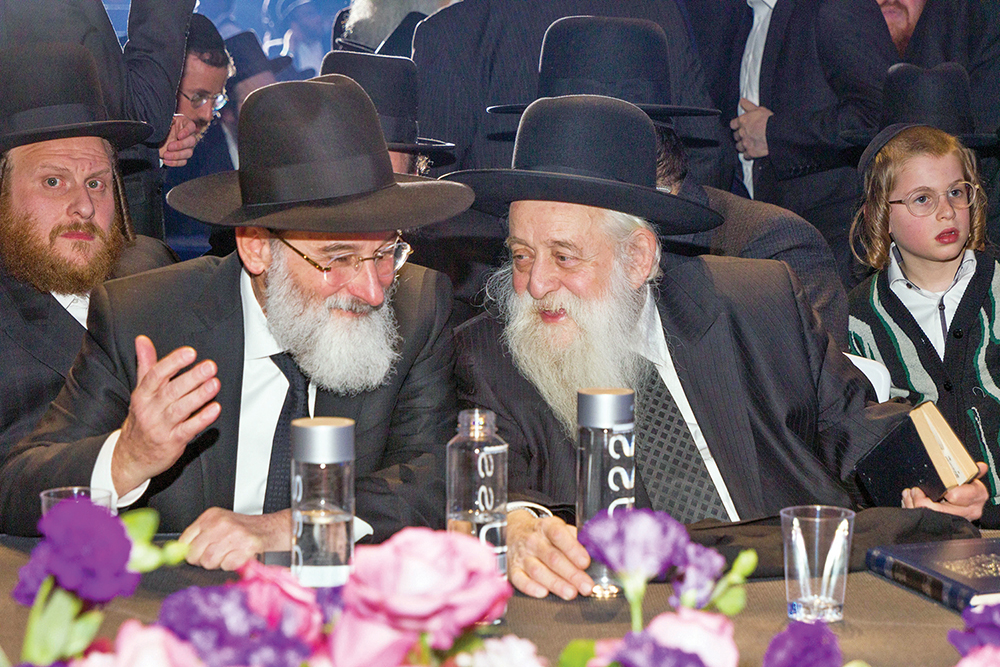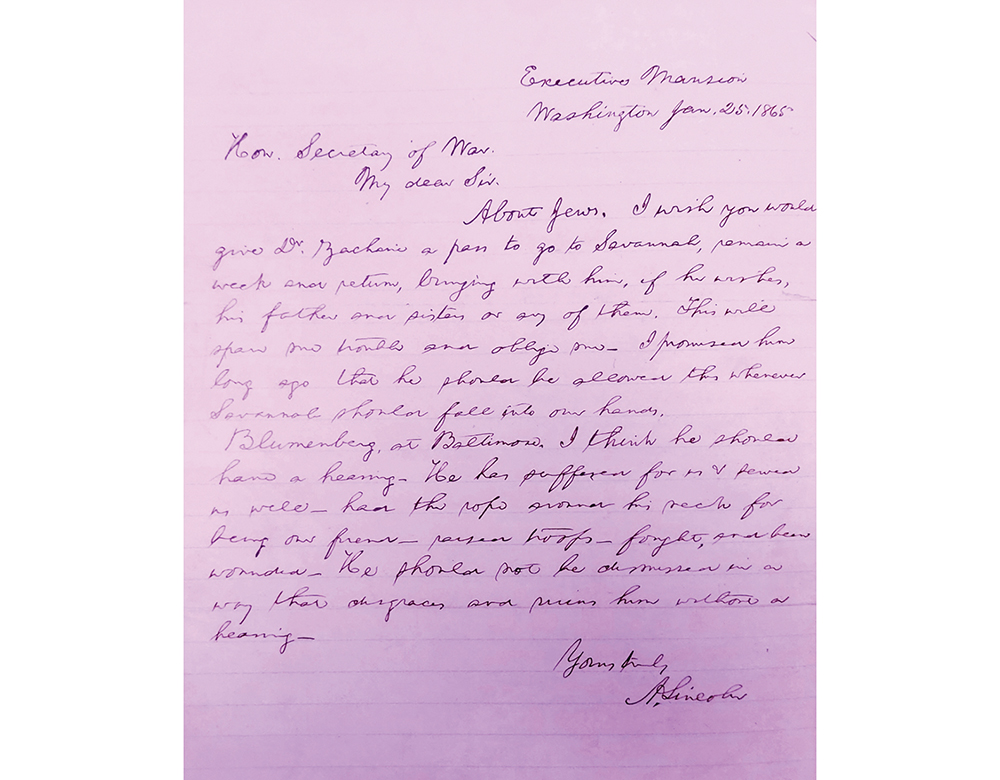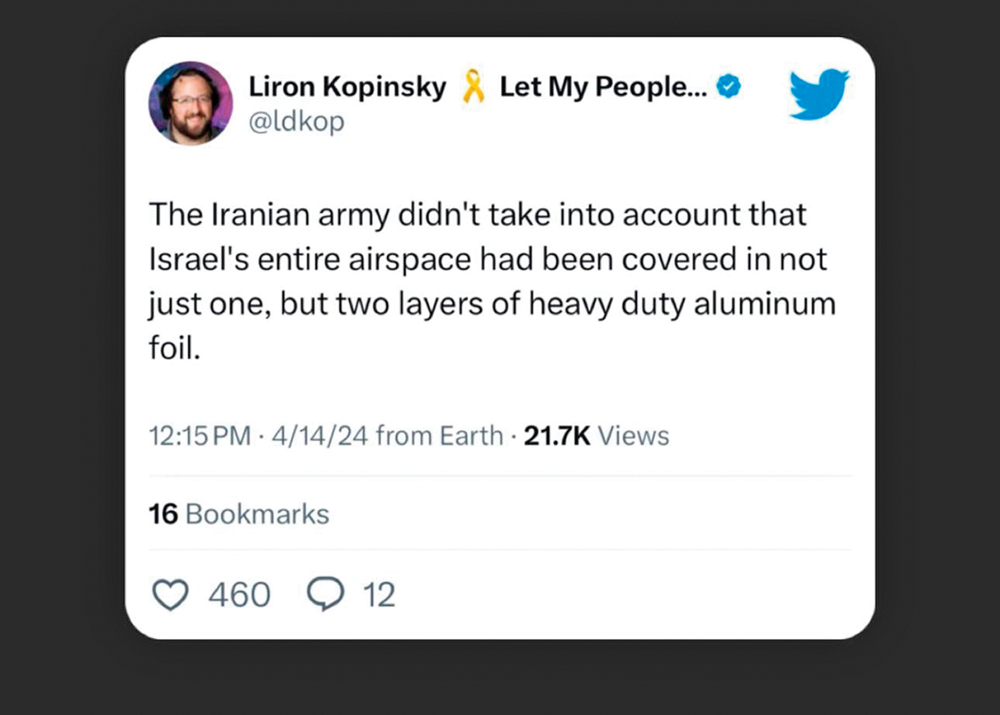



It was an emotional moment at the home of HaGaon HaRav Chaim Kanievsky, shlita. No one was expecting it, but suddenly Rav Chaim was moved to tears. He was visibly emotional and could not contain himself. What caused Rav Chaim to cry? It was a story about remarkable ahavas haTorah told by his chavrusa and close confidant, HaGaon HaRav Elya Mann, shlita.
The event was a pesicha event, the day after Shavuos, marking the inauguration of Dorshei HaDaf, a new Dirshu project that will feature a hotline whereby anyone who has a question on that day’s Daf can call a number and receive answers from a rotating team of talmidei chachamim who will be charged with answering the phones.
At that event, Rav Elya Mann related, “Today is 7 Sivan, the yahrzeit of the famous ger tzedek of Vilna, Rav Avrohom ben Avrohom. When Rav Avrohom was taken to be burned al kiddush Hashem for converting to Judaism, he requested from those who came to kill him that they honor his one final request as has been customary throughout the ages before killing someone… They agreed.
“He asked to be taken to the Vilna Gaon. They brought him to the gaon and he asked the gaon the following question: ‘We know the rule of zerizim makdimim l’mitzvos – One should perform mitzvos with alacrity. According to that dictum, I should be running to fulfill this mitzvah of dying al kiddush Hashem. On the other hand, the quicker I run, the quicker I will hasten my death, and one must not hasten one’s death. What should I do? Run quickly or not?’”
Upon hearing Rav Elya tell over the question, Rav Chaim became extremely emotional and let out a sob. Clearly, the ger tzedek’s love of Torah and mesiras nefesh touched him deeply.
Rav Mann continued, “Before the Gaon had a chance to answer his question, the soldiers hustled Rav Avrohom away. The Gaon rushed to the window and shouted after him, ‘Reb Avrohom, quicker!’ Rav Avrohom began to walk quickly…”
Rav Mann remarked to Rav Chaim, “How much time did Rav Avrohom merit to learn Torah before he was killed? Still, we see what an exalted level of Torah he was able to reach. That is the power of immersion in Torah.”
Dirshu has made it its mission to facilitate and encourage limud haTorah with accountability among all segments of klal Yisrael and has invested a tremendous amount of resources to empower Yidden the world over to maximize both the quality and the quantity of the Torah they learn.
The latest program, Dorshei HaDaf, is another aid to Torah learning that Dirshu is providing as a service to klal Yisrael.
At the home of HaGaon HaRav Gershon Edelstein, shlita, senior rosh yeshiva of Ponovezh, HaGaon Rav Boruch Dov Diskin, shlita, rosh yeshiva at Yeshiva Orchos Torah, and primary composer of the Dirshu tests, as well as Dirshu’s nasi, Rav Dovid Hofstedter, and Rabbi Avigdor Bernstein, a senior member of Dirshu’s hanhala, explained to the rosh yeshiva how the new program came about. “Today, those learning the Daf HaYomi often come up with questions that they cannot answer. The nature of Daf HaYomi learning and the amount that must be covered daily often doesn’t allow for a protracted amount of time to research questions. What Dirshu has done is taken some of their most capable talmidei chachamim, those who have been tested cumulatively on the entire Shas with Gemara, Rashi and Tosafos over the past two or three machzorim of the Daf HaYomi, and have appointed them to be available on the Dorshei HaDaf hotline to offer learners answers to any questions they have.”
Rav Gershon gave his heartfelt bracha, saying that anything that will help improve people’s learning and deepen their understanding of learning is a good and important thing.
Rav Gershon also commented that the main thing is to increase Torah learning, both in quality and quantity, and if testing succeeds in doing this, then it is a vital, positive tool.
The Rosh Yeshiva commented that when large gatherings celebrating the accomplishments of lomdei Torah brings chizuk in learning and results in more people learning Torah, it is a great chizuk.
One of the unique aspects of the Dirshu Dorshei HaDaf program is the fact that the hotline is manned by those who have succeeded in taking and excelling on Dirshu tests on multiple machzorim of Shas. Rav Yaakov Hain, shlita, rosh kollel of Kollel Yissocher B’Ohalecha and a shoel u’meishiv in Yeshiva Orchos Torah, the yeshiva founded and headed by HaGaon HaRav Aharon Leib Shteinman, zt”l, explained what it was that enabled him to become one of the individuals who will be answering the phones for the Dorshei HaDaf program.
He said, “I have a tremendous amount of hakaras hatov for Dirshu because it was only through the Dirshu Kinyan Shas program that I was able to make my way through Shas in a comprehensive manner.
“I have two different positions. One as a rosh kollel and the other as a shoel u’meishiv. If I didn’t have the obligation to take the Dirshu tests I would be so busy with just learning the material for my two other responsibilities that I would have neglected learning the rest of Shas. It is only because of the rigorous testing schedule that I was able to complete Shas and retain the material in a verifiable way.”
Rav Hain then reminisced about an incident that transpired approximately 13 years ago. “At that time,” he explained, “they asked for a number of test takers to come and meet Rav Dovid Hofstedter. He wanted to hear about our experiences taking the tests so that he could hear feedback on how to make the program even more effective. I answered that I had already been tested in programs run by several different organizations and now I am with Dirshu. He asked me, ‘If other organizations are doing this, why is Dirshu necessary?’ I replied that Dirshu is the only organization that has different tracks for Gemara and Rashi and a separate track for Gemara, Rashi and Tosafos. ‘Why,’ he probed further, ‘is it significant that there is a separate track just for Gemara with Rashi?’”
I answered, “When one takes a test with Tosafos, human nature is that he focuses only on Tosafos without investing sufficient time and effort into understand the Gemara and Rashi. If, however, you first go through Shas being tested only on Gemara with Rashi and only then, for the next machzor, do you progress to including Tosafos, the benefits are indescribable!”
Rav Yaakov Menachem Krauss, a distinguished talmid chacham who has been tested on the entire Shas and is now one of the individuals tasked with marking Dirshu’s tests, spoke about how effective Dirshu’s tests were in enhancing his own learning. “Firstly, of course, taking a test creates a tremendous feeling of obligation to know the material. It is, however, much deeper than that. I think the most powerful effect that Dirshu has had on me is the sipuk, the spiritual satisfaction in learning it brings. There is nothing that can describe the rush one feels when, after the test, you get the answer sheet and determine if what you wrote was correct. When you see that you were matzliach the pleasure is incomparable!”
“One reason is because when a person does well on a Dirshu test he knows he succeeded in really knowing the Gemara. Dirshu doesn’t ask riddles or ‘gotcha’ questions, but rather asks solid and comprehensive questions that encompass the essence of the sugya. It is mind-boggling to contemplate the amount of Torah that Dirshu has caused to be learned. I often say that the night before a Dirshu test there is massive infusion of Torah being learned in the world—a zechus that cannot be properly quantified!”
At the home of Rav Chaim, Rav Eliyahu Mann sitting next to Rav Chaim was asked to convey Rav Chaim’s message. His remarks were reminiscent of the Gemara’s account of a meturgaman, a translator, who would amplify the words of the rebbi.
He said, “How fitting it is that this event of kiddush Hashem [of the launching of Dorshei HaDaf] is transpiring today.
Today is the day after kabbalas HaTorah, the receiving of the Torah. According to the Magen Avraham, it isn’t the day after kabbalas HaTorah but actually the day the Torah was given—51 days after the beginning of Sefiras Ha’Omer.
In order to understand Torah, one must acquire Torah. The Chazon Ish would say, “A person cannot acquire anything without the act of a ‘kinyan,’ an acquisition. Torah also requires a kinyan. For every acquisition of material possessions there are Mishnayos that explain how that kinyan takes place. With regard to Torah, as well, there is a Mishnah that delineates how to acquire Torah. That Mishnah is the one that enumerates the 48 ways to acquire Torah. The first way to acquire Torah, the Mishnah says, is ‘talmud’, to learn.”
What is “talmud”?
What does talmud mean and how is it acquired?
The simple answer is that talmud means to sit and learn Torah. It makes no difference what a person’s “job” is—whether he learns all day or engages in parnassah for part of the time. It all depends on what your primary focus is. If your primary focus is Torah, it means you are engaging in “talmud,” learning. It makes no difference whether you are engaged in other activities for part of the day. You are a “learner”; that is what defines you!
A person must use every free minute to learn and must make sure he has free minutes to learn.
This is especially important when it comes to Daf HaYomi. There are times when a person is busy. He does not have the time to learn or it is difficult for him to learn. Still, if he knows that he is learning the same daf all of klal Yisrael is learning he will somehow find the time to keep up, he will engage in “talmud” even when it is difficult. That is the first kinyan of the 48. Learning.
When a child who is becoming bar mitzvah comes to ask [Rav Chaim] what spiritual undertaking he should accept upon himself in honor of his bar mitzvah, Rav Chaim says, “To learn Shas.”
I ask Rav Chaim, “Shas?!”
He replies, “Why not?”
That is “learning.”
Learning means Shas, but it doesn’t have to be done in one night. When a person learns Daf HaYomi, he learns one daf today and another daf tomorrow, as the Gemara teaches, “The wise person says, ‘Today I will learn one page and tomorrow another.’ The wise person does not say, ‘How am I going to learn so much? How can I finish the entire Shas?’ The way to acquire Shas is by learning one daf after another with consistency.”
Throughout the generations it was known that one must learn from others. A rebbi must give over to a talmid and a talmid must learn from a rebbi.
Today, the new concept of [the Dorshei HaDaf] hotline is akin to a rebbi/talmid relationship. Whenever a person has a question he has whom to ask. Today, with the establishment of the new [Dorshei HaDaf] Hotline for shailos, it will be possible for people all over the world to tap into this rebbi/talmid relationship—even when the rebbi is geographically far away from them.
Rav Mann concluded by quoting Rav Chaim’s opinion with regard to Dirshu. He said, “Tell Dirshu that I am jealous of their zechusim. In many ways Dirshu has ensured that Torah should not be forgotten among Yisrael. Ashreichem v’ashrei chelk’chem, fortunate are you and fortunate is your lot!”
By Chaim Gold












